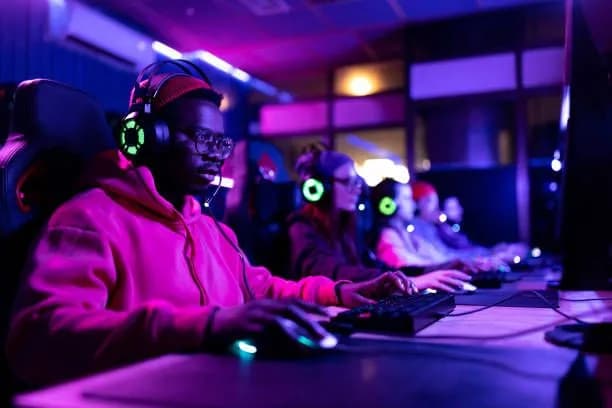
Gambling with Gear: How Rust Skins Translate Into Interactive Betting Challenges

If you have ever played Rust, you will undoubtedly already comprehend that survival means everything. Nonetheless, beyond fighting off enemies and building bases, an entirely unique economy has materialized—one where your virtual gear holds actual world value. In Rust, skins have developed way beyond cosmetic upgrades; they are now digital assets that players like you can trade, sell and gamble with.
This confluence between gaming and real-world speculation has assembled an exciting but perilous frontier: Rust skins fluctuate in worth based on facets of demand, rarity and aesthetic appeal—much like stocks or collectibles. Here, rare items like the Alien Relic SMG and Big Grin mask have fetched prices over $1,500.
Spanning from Inventory to Wager: How Skin Betting Operates
Imagine you have a prized Rust skin sitting in your inventory; instead of allowing it to collect dust, you can instead deposit it on a platform like Rustly, where your skin can either be converted into credits or used directly as a stake in games like coin flips, roulette or jackpot draws. Each format brings radically differing odds and levels of risk—some games offer rapid wins whereas others captivate you with high-stakes, high-reward jackpots.
However, the value of your wager is not fixed; it swings with the market. For example, today’s $50 skin could be worth $70 tomorrow—or $30 if demand plummets. This extra layer of volatility renders Rust gambling a heady combo of luck, market awareness and emotional judgment-making. It is no longer just about winning or losing—it is also about timing and strategy, too.
Betting Feels Different When It’s Personal
Distinctly different to betting with chips or cash, gambling with Rust skins feels inherently more personal. You are not just risking anonymous currency; you are putting your favorite items—gear you might have fought hard to earn—on the line. That attachment makes every bet more compelling (and also more nerve-wracking).
Many players recall how losing a skin they crafted memories with feels worse than losing an equivalent amount of cash. On the flip side, winning a new rare skin can feel like hitting a jackpot twice over: one win at the table and another in future resale value. Ergo, the emotional highs and lows are amplified, pulling you deeper into the overarching undertaking.
The Regulatory Grey Area
If you are thinking about getting involved, it is critical to comprehend that Rust skin betting operates in very particular legal conditions. Traditional gambling is heavily regulated but the use of digital items like skins exists in a legal grey zone. Some countries have cracked down—for example, Belgium and the Netherlands have issued rulings that classify skin gambling as illegal betting.
However, in most locations, platforms continue to operate without inflexible oversight—this absence of regulation has raised some concerns for detractors, especially around underage gambling and fairness. It is a weighty issue—and one that is attracting more scrutiny among certain countries and jurisdictions.
How Rarity and Marketplaces Dictate the Game
When it comes to Rust skins, rarity is indubitably king. Items like the Tempered Mask or the Whiteout Set can command astronomical prices simply because they are rare and visually striking. Here, marketplaces set the tone, with platforms like Skinport and Bitskins facilitating thousands of transactions daily.
If you are serious about betting with skins, it certainly pays to review the market. Some savvy players monitor pricing trends and trading volumes, treating skins almost like speculative assets. There are even Discord groups and Telegram channels dedicated to tracking undervalued skins and anticipating the next big wave. Getting involved is therefore more than merely playing—it means learning an entirely unexplored digital economy.
The Gamification Element: Fun or Perilous?
Skin betting sites borrow heavily from video game design, proffering loot boxes, spinning wheels and flashy animations. However, these features are not exclusively for show; they are psychologically engineered to make gambling feel fun and harmless.
However, appearances can be deceiving: research shows that loot box mechanics are closely linked to problem gambling behaviors. The thrill of colorful spins and quick rewards can make it easy to keep chasing wins. Thus, as a player, if you stay mindful, it keeps the affair fun and prevents entertainment from descending into habitual (and detrimental) patterns.
Social Proof and Peer Pressure
You’ve presumably seen influencers, streamers and eSports teams showcasing high-stakes skin bets—one thing that fires the popularity of Rust skin gambling is the distinctly social aspect. YouTubers and Twitch streamers typically show off their bets, turning massive wins (or crushing losses) into entertainment. If you have ever watched a jackpot win go viral, you will know how tempting it can be to join in.
Peer dynamics extend to private Discord servers and group chats, where players hype up wins and egg each other on. Here, social validation can make risks seem more acceptable, even when they should not be. Therefore, remaining grounded in your motivations—and your limits—is critical if you decide to trek into this space.
Look Out for Scams
The booming Rust skin market has unfortunately attracted bad actors. Fake sites, phishing schemes and rigged betting games are rampant. In 2024 alone, cybersecurity firm Kaspersky reported 893 million phishing attempts, with a huge portion of this targeting skin traders and gamblers.
Therefore, if you plan to wager, do not trust sites at face value. Instead, stick with platforms that offer provably fair systems, HTTPS encryption and two-factor authentication. Moreover, always double-check trade links and avoid deals that seem too good to be true—because they probably are.
What the Future Might Hold
Looking ahead, Rust skin betting is likely to continue growing. Against this fertile backdrop, emerging technologies like blockchain verification and smart contracts could bring more transparency and security to trades. Already, some platforms are experimenting with NFT-based skins, where ownership can be publicly verified.
At the same time, regulators are closing in. In late 2024, the European Gaming and Betting Association proposed a framework to regulate digital item gambling, suggesting stricter age verification and licensing standards. Whether this will tame the "Wild West" of Rust gambling—or force it further underground—remains to be seen.

Kateryna Prykhodko on luova kirjoittaja ja luotettava EGamersWorldin toimittaja, joka on tunnettu mukaansatempaavasta sisällöstä ja yksityiskohtien huomioimisesta. Hän yhdistää tarinankerronnan selkeään ja harkittuun viestintään, ja hänellä on suuri rooli sekä foorumin toimituksellisessa työssä että kulissien takana tapahtuvassa vuorovaikutuksessa.
 Steal a Brainrot Winter Hour Tapahtuman tiedotLöydä kaikki Roblox Steal a Brainrot Winter Hour Event - New Christams Brainrotit ja palkinnot.
Steal a Brainrot Winter Hour Tapahtuman tiedotLöydä kaikki Roblox Steal a Brainrot Winter Hour Event - New Christams Brainrotit ja palkinnot. Tässä on Fortnite Chapter 7 Kaikki hahmot ja niiden sijainnitFortnite Chapter 7 Kaikki hahmot ovat levittäytyneet Golden Coast -kartalle, ja ne tarjoavat palveluita, palkkausvaihtoehtoja ja tehtäviä, jotka muokkaavat jokaista ottelua avauskaudella.
Tässä on Fortnite Chapter 7 Kaikki hahmot ja niiden sijainnitFortnite Chapter 7 Kaikki hahmot ovat levittäytyneet Golden Coast -kartalle, ja ne tarjoavat palveluita, palkkausvaihtoehtoja ja tehtäviä, jotka muokkaavat jokaista ottelua avauskaudella. Mystbloom 2.0 Paketin tiedot: Pelin ulkoasu: Kaikki nahat, hinta, julkaisupäivä, pelin ulkoasu.Mystbloom 2.0 jatkaa kukka- / "bloom"-teemaa, säilyttäen terälehtimäiset muodot ja kausiluonteisen väripaletin, jotka määrittelivät ensimmäisen malliston.
Mystbloom 2.0 Paketin tiedot: Pelin ulkoasu: Kaikki nahat, hinta, julkaisupäivä, pelin ulkoasu.Mystbloom 2.0 jatkaa kukka- / "bloom"-teemaa, säilyttäen terälehtimäiset muodot ja kausiluonteisen väripaletin, jotka määrittelivät ensimmäisen malliston. Dota 2 DreamLeague Kausi 27 YleiskatsausTutustu kaikkeen DreamLeague Season 27:stä: aikataulu, formaatti, osallistuvat joukkueet ja 1 000 000 dollarin palkintopotti.
Dota 2 DreamLeague Kausi 27 YleiskatsausTutustu kaikkeen DreamLeague Season 27:stä: aikataulu, formaatti, osallistuvat joukkueet ja 1 000 000 dollarin palkintopotti.


